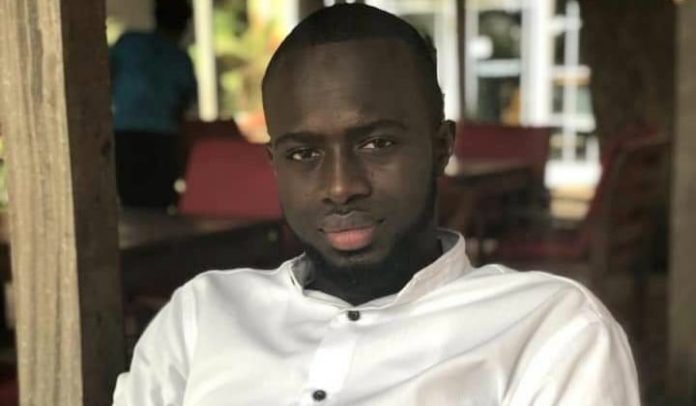A top doctor at the Kanifing General Hospital testified in the rape trial of businessman Bubacarr Keita on Wednesday offering his view that DNA analysis is the best way to test the paternity of a child when there is dispute. Dr Babanding Daffeh said it was the best option all over the world.
Bubacarr Keita, 29, is standing trial for raping his former wife’s 15-year-old sister. He denies the serious charge.
At the high court in Bundung on Wednesday, Dr Babanding Daffeh testified in the case for the third time as the prosecution’s seventh witness.
And replying to a question by Alasan Jobe who was prosecuting regarding the best way to settle the paternity of a child amid a dispute, the top doctor responded: “All over the world, the best way to test paternity is to do DNA when there is a dispute.”
The Fatu Network understands state lawyers have written to lawyers defending Mr Keita twice between April and June for a DNA test to be conducted but they have not responded to their request.
Mr Keita’s lawyer Lamin Camara told The Fatu Network they would not submit to the state because they do not trust it.
“We want to proceed with the case to its end now. Why didn’t they bring this at the start of the trial but waited until after our client was remanded,” Mr Camara said. Mr Camara also wondered why two people’s name came up in the investigation only for the state to cherry-pick who to drag to court.
However, in court on Wednesday, Dr Babanding Daffeh explained how he took management of the complainant’s case when she appeared at Kanifing General Hospital on November 8, 2019.
He testified: “On the 8th of Nov 2019, in the morning, the victim and her sister plus a police officer came to the Kanifing General Hospital at the One-Stop Centre. It’s where GBV cases are handled. I was not on the ground when they arrived. However they were received by a midwife who initially asked the victim as to why they were at the hospital in order to categorise it, whether it falls under GBV. Indeed she opened a case file and asked few questions, examined and sent them for lab investigation before I arrived.
“When I arrived later in the day, I picked up management of the case. This management has four components: the first is the history taking, the second is the physical and vaginal examination, third [is] lab investigation and scanning which she already did before I came, fourthly treatment. The treatment also had three components: psycho-social counseling, antibiotic treatment if need be and prophylacsis treatment. It’s (prophylacsis) to prevent infection where we suspect there is an intercourse that is not protected.
“Starting from the history taking, two fundamental issues arose when I started questioning. The victim did admit that she has a boyfriend and according to her they met in September 2019, that was during the summer holidays and they have been communicating but they never had sex at all. The second fundamental issue that arose from the history was that some time around June after Ramadan 2019, that the husband of the sister forcefully had a sexual intercourse with her in her room and this was not once.
“Then we went to the physical examination. On physical examination what we got was the suprapubic mass. This mass was suggestive of pregnancy. On the vaginal examination, we could not [find] bleeding, bruises or lacerations at that time.”
According to the doctor, the victim appeared few months after the incident, “so obviously you may not see those things at that time except for menstrual bleeding if you are not pregnant”.
He added: “However, the hymen of the victim on vaginal examination was open allowing examination finger difficult. Then the lab investigation, that is the pregnancy test, was positive pregnancy VCT that is. The HIV test was negative, hepatitis test was negative. The scanning results showed 16 weeks five days pregnancy. That is four months, five days. So now we have two scanning reports, one from family planning [and] one from the hospital. The one from family planning said 21 weeks (+/-) and one from Kanifing [hospital] said 16 weeks, five days (+/-).
“So if you go by the two reports, you go by the one from the hospital and not the private clinic because that’s where the case is filed. If you go by either of the results, you will realize that the victim appeared at the health facility when she was already four months pregnant. And if you go by calculation of the scanning, the victim was pregnant around June and July and this will addressed the fundamental issues gathered from my history. Then we went to the treatment. We did psycho-social counseling for the victim.”
The witness explained that SGBV victims are often traumatised hence the need for psycho-social counseling.
He said: “The victims of SGBVs are usually the underage and what they go through usually is they are traumatised. Therefore they need psycho-social support and counseling.”
Still, Dr Daffeh testified that in the case of the complainant, she needed ante-natal care at the Kanifing General Hospital because she was pregnant.
“This care continued through the nine months of pregnancy, until the 11th of April I conducted caesarian section on the lady. The reason being because she’s a teenager, the pelvis is not ready to allow vaginal delivery and also not to subject her to another pain because of the trauma she went through. I also circumcised the little child born few months later.
But prior to this C-section – the delivery – when we completed the investigation I wrote a report. That report indicated briefly what was found out on our examination and investigation and what the conclusion was. And I also did inform myself in the main file of the victim a case like this will attract DNA analysis in order to determine the real paternity of the unborn child. The medical report was handed over to the police and the case file was filed at the One-Stop Centre,” he said.
The doctor said he put his findings on record “in the main file and also in the report that I gave to the police officer”. He also said he could identify the medical report he prepared when he saw it. When asked by prosecuting attorney Alasan Jobe how he could identify it, he said he could through his name, hand-writing and signature.
The report was then admitted into evidence after he confirmed preparing it, with Lamin Camara, defending, having no qualms in having it admitted.
Elsewhere, the doctor testified that the complainant was not sexually active prior to the incident of the alleged rape.
He said: “I think my explanation on vaginal examination will suffice. Because I said on vaginal examination, the hymen was open allowing only one examination finger with difficulty which clearly shows the girl was not sexually active otherwise there would be no such difficulty.”









